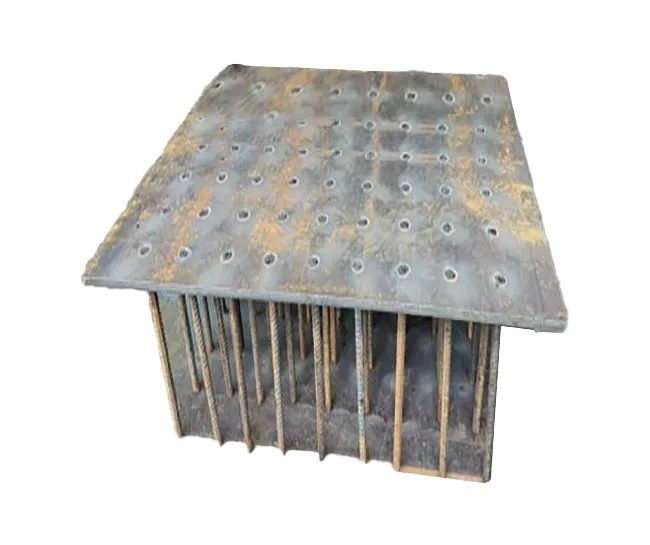Products Description
Embedded Steel Plate: Hidden Solid Nodes for Structural Connections
Embedded steel plates are metal connectors pre-embedded in concrete. They are used to achieve rigid connections between different components such as steel structures and concrete structures, equipment and foundations, providing stable force-bearing nodes for subsequent connections. As key components for reliable force transmission, they are widely applied in engineering fields like construction, bridges, and mechanical equipment.
I. Materials and Specifications
- Materials: Q235 carbon steel is suitable for civil buildings with light loads; Q355 low-alloy steel is used in heavy-duty industrial buildings and bridge projects; 304/316 stainless steel is ideal for humid and corrosive environments.
- Specifications: Thickness ranges from 8-20mm, and planar dimensions are from 100mm×100mm to 1000mm×1000mm. The surface can be rust-proof treated, and anchor bars are often welded on the back to enhance grip with concrete.
II. Structural Features
- Steel plate body: Rectangular or circular, with bolt holes or welding grooves processed to precisely match the connected components.
- Anchor bar system: Steel bars/rods welded vertically on the back, with a length of 10-20 times the diameter of the steel bars, to transmit loads to concrete.
- Positioning parts: Welded angle steel or lugs to ensure accurate positioning during pouring.
III. Core Functions
- Transmit loads from the superstructure to the concrete foundation, ensuring a continuous force path.
- Provide bolt or welding interfaces to achieve rigid fixation and prevent loosening.
- Disperse concentrated loads to avoid local cracking of concrete.
- Pre-embedding reduces subsequent processes, shortens the construction period, and is suitable for high-precision connection scenarios.
IV. Construction Points
- Positioning deviation is controlled within ±5mm, and the spacing error of grouped embedded steel plates does not exceed ±10mm.
- Fix with steel bar supports, and anchor bars are firmly bound/welded to structural steel bars.
- The surface is derusted and painted (except for stainless steel), and covered for protection against pollution.
- During pouring, the vibrator is kept more than 30cm away from the steel plate to ensure dense concrete around it.
- After curing, clean the surface, correct deformation, and repair rust.
V. Applications and Selection
- Load: For light loads, choose Q235 (8-12mm); for heavy loads, select Q355 (16-20mm) with encrypted anchor bars.
- Environment: Use ordinary steel in dry conditions, and stainless steel or hot-dip galvanized steel in humid/corrosive environments.
- Connection: For bolt connection, reserve holes (with a diameter 2-4mm larger); for welding, flat edges or 45° grooves are required.
- Durability: Weathering steel/stainless steel is used for permanent structures, and ordinary carbon steel for temporary structures.
Summary
Embedded steel plates are "solid bonds" for structural connections. Their material selection, construction, and quality control directly affect connection reliability, making them important nodes for improving structural safety and durability.



